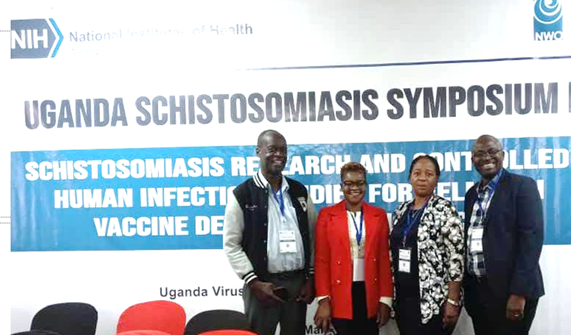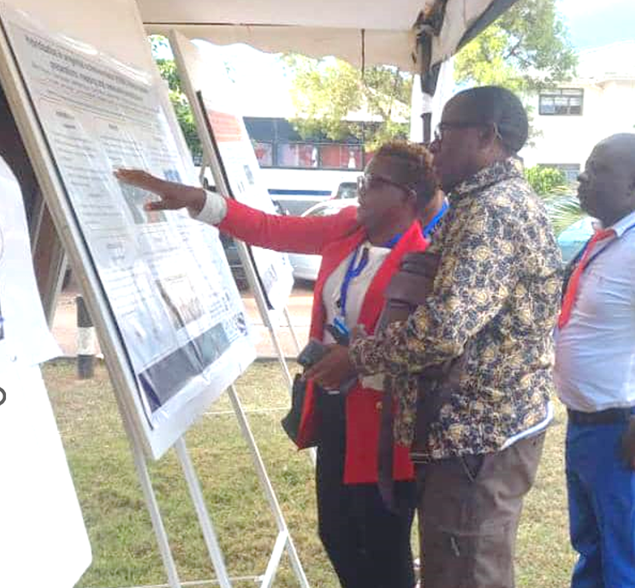
Four members of Malawi team presented their HUGS research at this international symposium on schistosomiasis. The meeting was held at the MRC-Uganda Virus Research Institute (UVRI) in Entebbe, from 27 February to 1 March 2023, as part of a newly funded launch of the Uganda-Schistosomiasis Multidisciplinary Research Centre (U-SMRC). The U-SMRC is a research initiative of the USA-NIH within their expanded programme on supporting Tropical Medicine Research Centers. The basis of the U-SMRC is to better understand why morbidity from intestinal schistosomiasis remains worryingly high despite two decades of national control. Part of their research programme is focused on snail-related aspects of transmission, as led by Dr Casim Tolo, Dr Narcis Kabatereine and Prof. Russell Stothard.
Welcome remarks were made by U-SMRC’s principal investigator, Prof. Allison Elliott , who warmly received all delegates. Then, Dr Edridah Tukahebwa introduced the achievements of the longstanding national control programme for schistosomiasis and how U-SMRC seeks to answers various perplexing questions about the contrasting epidemiology of intestinal schistosomiasis between Lake Albert and Lake Victoria basins. Their comments strongly resonated on the importance of sharing latest research evidence and best control practices between countries in sub-Saharan Africa.

Thereafter, several researchers including early, middle and senior career researchers presented their findings on various aspects of schistosomiasis. This also included early steps to develop a human infection challenge model in Entebbe which follows on from pioneering developments in Leiden University Medical Centre. The talks sparked much deeper discussions between delegates on parasite infection, host immunology and public health control. Amongst these talks, Gladys Namacha and Dr Seke Kayuni gave speed presentations of their featured posters.
In total, the Malawi team made four poster presentation on their findings from snail surveillance, animal surveys and the human cohort study. The latter included two posters featuring household mapping with community sensitisation, as well as data collection with preliminary epidemiological analyses. Initial findings include revealing a considerable burden of urogenital schistosomiasis in pre-school children and identifying gaps in access to regular treatment with praziquantel.
Similar short comings in schistosomiasis control in Uganda were described by others where, owing to limited stocks of praziquantel, many adults still live in need of regular treatment. Aspects of snail biology and its changing role in the transmission of intestinal schistosomiasis were also highlighted by Prof. Russell Stothard. During fieldwork in the week before, with David Oguttu, a PhD student of the U-SMRC, the team encountered naturally infected Biomphalaria pfeifferi first observed outside of Lake Albert up on the inland escarpment nearby. Like this snail’s recent discovery in Nsanje, Malawi, this expanding snail range is a very worrying development.
In addition to these talks, delegates watched videos of typical schistosomiasis fieldwork. To help in public outreach, a bespoke U-SMRC session nurtured dialogue with local secondary school children. At the end of the meeting, all delegates were reminded of the long-lasting burden of intestinal schistosomiasis in Uganda. During the Gala Dinner, the eminent scientist and notable schistosomiasis pioneer, Dr Narcis Kabatereine, described his personal journey in the control of hepatosplenic schistosomiasis in Uganda. This included circumventing the many hurdles of gaining support, both nationally and internationally, highlighting the national control programme’s successes yet acknowledging its failures. Tackling these unsettling disappointments underpins U-SMRC’s rationale.